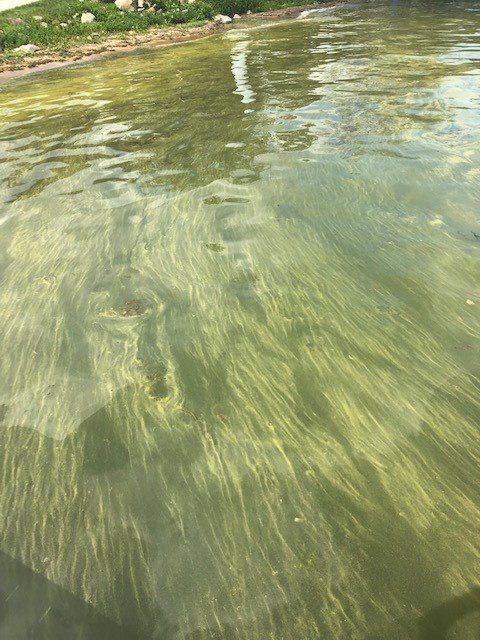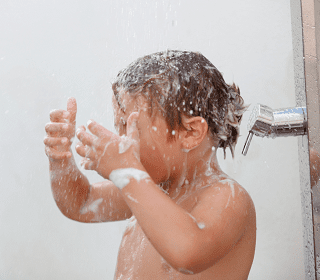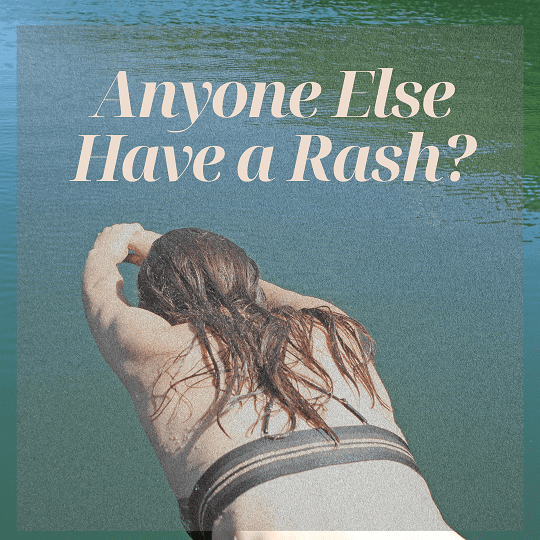Have you, or someone you know, developed a rash after swimming in the lake? I get contacted every year by people wanting someone to “clean up the lake” to prevent it from happening. They forget that the lake is a highly interactive, natural ecosystem, not a swimming pool. It is impossible to “fix” one problem without impacting some other part of the system.
What is Causing the Rash?
Swimmer’s Itch
The rash may be Swimmer’s Itch, caused by a reaction to tiny parasites in the water (cercaria) that burrow into your skin while you’re swimming. These parasites can’t survive in people, so they soon die.

The Horrifying Truth about Swimmer’s Itch (video)
cer·car·i·a
NOUN
cercariae (plural noun)
a free-swimming larval stage in which a parasitic fluke passes from an intermediate host (typically a snail)
to another intermediate host or to the final vertebrate host.
The rash typically affects skin that is not covered by a swimsuit and clears on its own within a few days. Swimmer’s itch isn’t contagious from person to person. Keep in mind, your sensitivity to swimmer’s itch can increase each time you’re exposed to the parasites that cause it.
You can relieve itching with calamine lotion, a baking soda paste or an over-the-counter corticosteroid cream.
Blue-Green Algae Rash
The rash may also be caused by contact with cyanobacteria, also called blue-green algae, which is always present in the lake. It only presents a risk if there is an overabundance, or bloom, and starts releasing toxins.
Like Swimmer’s Itch, you can relieve itching with calamine lotion, a baking soda paste or an over-the-counter corticosteroid cream.
WARNING!

Exposure to cyanobacteria toxins can cause other much more serious symptoms depending on what type of toxin is in the water. There is no way to know which toxin is present without laboratory analysis. Children and animals are much more at risk of developing serious symptoms if exposed to cyanobacteria toxins.
If in doubt, Just stay out!
Not Everyone Develops a Rash

Whether it is Swimmer’s Itch or blue-green algae, the most puzzling question is why some people develop a rash after swimming in the lake, but others do not. Since these are allergic reactions or, more accurately, immune responses, it simply comes down to a person’s own sensitivity. It is the same reason some people have an allergic reaction to peanuts or pollen and others do not.
Advice
Always take a warm, soapy shower or bath after swimming or wading in lakes, rivers, and ponds.
Conclusion
Based on years of data and ongoing research, Lake Maxinkuckee is classified as a mesotrophic lake with a diverse and stable native plant population, excellent water quality, great fishing, a natural habitat for wildlife with wonderful recreational potential.
Lake Maxinkuckee’s Annual Check-Up
Is Lake Maxinkuckee Trending Up or Trending Down?
Additional Resources
IDEM Blue-green Algae Fact Sheet
CDC – Cercarial Dermatitis (Swimmer’s Itch) – Frequently Asked Questions

Hi, I’m Debbie Palmer. I received a BS in Horticulture from Purdue University. Here at LMEF, I am responsible for outreach presentations, monitoring the lake and it’s wetlands, project manager for restoration and research projects, and act as a community resource for all things related to the well-being of Lake Maxinkuckee and its surrounding watershed. I completed Indiana Watershed Leadership Academy, volunteer with the Indiana Clean Lakes Program, Hoosier River Watch and Marshall County Lakes and Waters and serve as a Board Member for Indiana Lakes Management Society.


Recent Comments